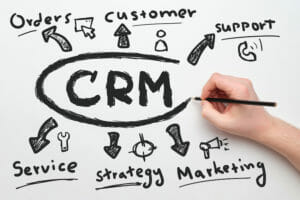Brand integrity: phew, what a complex and layered topic! We don’t blame you if a million things come to mind when you hear the word “brand”-- the same thing happens to us!
When it comes to developing a brand, there’s certainly some information overload. What does it mean? What should be focused on first? What are the rules?
There’s no official handbook, but a kazillion blogs are trying to tell you the best approach. That’s why we aren’t here with a step-by-step how-to guide– we decided it would be much better to just let you know why brand integrity is so important.
After all, you won’t be motivated to do the best you can if you don’t understand why you are doing it!

Don’t worry, we aren’t giving you a boring textbook definition! In our opinion, brand integrity is something that happens when you stick with your values and authenticity– no matter the situation. It’s the basis of your reputation and the impression you leave initially (and going forward).
Brand integrity shows up through how you face adversity. It shows within your reaction when your business doesn’t live up to expectations or promises. No business is perfect, and there’s no way every single customer will be pleased. However, it’s how you handle these bumps in the road that maintain your brand integrity.
In developing brand integrity, a business hones in on the target audience and sticks with a consistent message. If you lose track of your brand integrity, you risk losing a customer (or two).
Let’s break down a few ways brand integrity impacts your business in the long run:
Even if customers are newly exposed to your brand, a lack of brand integrity will be obvious.
Brand integrity will show up through a mission-focused, value-based approach. You will be able to easily relate to customers new and old. With a solid brand, it will be clear that you have identified what problems you can solve and what pain points you can address.
Consistency is always going to be key. You won’t have to explain your brand or show your integrity– customers will easily be able to see it for themselves.
Brand integrity will make it a lot easier to differentiate yourself from others in your niche. It will naturally demonstrate your experience and what you’ve learned throughout your time in the business.
It won’t always be the perfect picture, but imperfections display the strength of your brand integrity and how well you overcome challenges.
Your unique story will also contribute to the strength of your brand integrity and seamlessly weave in and out of what your customers see. This will set you apart from other businesses that haven’t taken the time to establish a brand or emphasize their story. It will set you apart from those who don’t have a clear focus or consistently try to relate to their audience.
Clearly, customer acquisition is important, as companies spend tons of money each year on this very thing. However, retention is just as important. It’s a lot cheaper and easier to keep customers coming back versus only focusing on new ones!
Your product/service will accomplish the main goal (hopefully), but ultimately the brand integrity is what creates the relationship with your customers. This relationship is what keeps them coming back and recommending you to their friends and family. The relationship built through your brand integrity is what cultivates trust and expectations.
If you don’t focus on your brand and its integrity, you can lose out on many valuable relationships—which could lead to a loss of business!

We’ve talked about what it is and why it’s important, but let's discuss the basics behind brand integrity:
Authenticity- Be upfront and honest. Show that your business sticks to its values and the commitment to its customers. Show the ups and the downs in running a business. Let your audience see the full picture and truly relate. Make it obvious that you aren’t hiding anything behind a facade.
Confidence- Be transparent about limitations, but show confidence in your abilities and experience. Don’t hide adversities- put them on full display and show your audience how you handle issues. Persuade your audience that you know their pain points and are confident you can help.
Customer-centered approach- You have to show that your business looks at the big picture and fixes the entire problem. You're not just out there to present a quick fix and make some cash. Your focus is on the customer experience and the promises you have made.

We hope this leaves you with a better understanding of brand integrity and why it’s so important to the success of your business. It’s a different type of long-term investment that you might not have considered much before– an investment in your reputation and your customer relationships.
Spend the time and effort learning how to strengthen your brand integrity now and the outcomes will be more than worth it!
Want to find out how we can help you? Let’s chat.
You didn’t quit your 9-5 to start a business that is “just fine”. Let’s face it, you started up a business to serve a mission. To follow your passions, to make an impact, to set impressive goals and attain those goals.
There’s a bit of fantasy behind every entrepreneurial venture, and the last thing we want to think about are the challenges and hard work between us and that dream.
But what if we took a different look at the process? The pathway to success? What if instead of getting discouraged because we aren't seeing instant success or profit, we reanalyze the factors that got us here?
The Aggregation of Marginal Gains concept is not only a great concept to apply to our business mindsets, but also a great addition to our personal mindsets. It emphasizes the journey more than the end result.
Time to take a deeper dive into this inspiring notion!
This may come as a surprise, but the Aggregation of Marginal Gains concept did not come from an entrepreneur, inventor, or economist. It did not come from an author or a professor. Nope– it came from a man named Dave Brailsford, the Performance Director/Cycling Coach for British cycling!

After years of discouraging losses, David Brailsford stepped up for the British cycling team and started to dissect all the elements that may affect performance. Diets, bed pillows, van cleanliness– you name it, he analyzed it!
Brailsford then improved every one of these elements by 1%. His theory was that every small change can compound into long-term improvements and that incremental change would slowly lead to significant outcomes.
Even though this may seem a bit meticulous, his theory proved valid: The team went on to win 7 Tours de France within 8 years and won 16 Olympic gold medals. (Pretty noteworthy results if you ask us!)
Basically, the Aggregation of Marginal Gains means it pays to focus on the smaller picture versus the big picture/end goal. Sometimes we can get distracted by the big picture and multiple ideas. Not only can this mentality be overwhelming, but it can be a huge time-waster.
It makes sense to implement small, gradual changes instead of huge, quick changes. Continuous process improvement will pay off in the long run! This mindset is a lot more likely to keep you on track and headed toward an important achievement.

We have now seen this concept in a cycling example, but what about an example that pertains to more people? Don’t worry– there are a lot of ways marginal gains can be incorporated in your life, both personally and professionally!
Physical exercise is a great application of this concept, since a few minutes a day over a long period of time can bring great results. Another application is journaling daily to improve mindfulness or listening to an educational podcast a few times a week. In terms of your business, you could try to automate an additional process each month or slowly change the structure of sales conversations or marketing approaches. The options are endless!
In our research on this topic, there seemed to be a few additional points that deserve mentioning. After all, no concept can be blindly applied to absolutely every situation!
Be practical- The idea behind the Aggregation of Marginal Gains is the buildup of change over time. But guess what? If you run into obstacles or lose motivation, it can destroy any progress and delay the ultimate goal.
It’s important to be able to stick with elements that you change or adapt. If you commit to running 5 miles a day when you don’t currently run, you are likely to lose momentum early on. If you set a more realistic goal, like running/walking for 30 minutes every other day, you are much more likely to see success.
Consider marginal losses- Although this may sound negative, it really doesn’t have to be. Incorporating marginal losses means gradually cutting out habits that detract from your goals. For instance, eat out less or eliminate one unnecessary business expense each week. By losing one habit, you can gain momentum in a positive direction!
Define your focus- The Brailsford story makes it seem like you have to slowly improve everything, but that’s not exactly the case. If you try to focus on everything, it may end up being counterproductive! It’s totally okay to define factors that have a heavier impact and concentrate your focus on those things.

Sure, the initial focus may have been on those gold medals, but what else can the Aggregation of Marginal Gains concept bring us (and our businesses)?
You may see a better team dynamic. Sometimes troubleshooting and working together on continuous improvements can be motivating for a team!
You may see less of a focus on an end goal and more of a focus on the process. Attention may shift towards the impact of individual changes and valuable lessons learned along the way.
You may discover a new definition of success. Rather than instant gratification or quick results, you achieved something that took long-term motivation and refining details/skill sets.
Small changes, major impacts! The Aggregation of Marginal Gains concept may initially serve a direct purpose, but it can also indirectly affect a myriad of other things. Where do you see this concept fitting into your life and business?
Contact us for a consultation!
Imposter syndrome is easy to catch, especially with information thrown at us from all angles. Business owners are constantly in a state of comparison, worrying about the competition and how to stay relevant. They have to worry about the next steps and how not to get overwhelmed.
Today, we remind you of something important: no business is too small to invest in the right tools.
Yes, you heard us correctly– nurture and invest in your business! If you don’t invest in it now, how will it ever become the Allstar you know it can be? We also happen to know of a great place to start: CRMs.
There’s the imposter syndrome kicking in! We can hear it already! Well, shut it down because your business is fully ready to add a CRM to its toolbox. If you find the right CRM that fits your business needs, it will propel your business forward.

CRM stands for Customer Relationship Management, and the concept is pretty straightforward: CRMs take care of your customer relations from start to finish. They collect valuable info from customers, determine potential leads, and manage the relationship going forward.
Depending on the CRM, it honestly can do anything to help with your business needs, from finances and sales reports to customer support.
By 2027, the CRM market is expected to skyrocket to 113.46 billion dollars! Businesses of all sizes and niches use CRMs and get some major bang for their bucks. Now let’s take a look at some more reasons why a CRM would be great for your small business!
All businesses start from somewhere, but that doesn’t mean you have to stay there. If your business is doing well and you know it’s getting bigger and harder to manage, invest in tools to aid scalability. Growing pains will happen– CRMs can be a major help with those pains.
Take on more customers and profit without hiring tons of extra team members. Let the CRM do the mundane, time-consuming tasks. Let it organize the information and create reports. You’re going to outgrow those spreadsheets, so let the CRM take over!

Don’t get bogged down by a growing number of to-dos; pay a monthly fee and let the CRM perform its magic.
Concerned about finding the CRM that aligns with your business growth goals? Zapier did an excellent report on the best CRMs for different needs. Are you worried about the price? Need help with scaling? You’ll find something that suits you on this list.
Listen, the middleman gets a bad reputation– sometimes it's not all that bad of a concept!
You don’t have to worry about human error with a CRM because it will communicate pertinent changes and news. A CRM will consistently update information and make necessary phone calls. It will know when to follow up (and actually follow up), so you don’t have to hire another person to handle that.
We’re all about giving people jobs, but sometimes more hands in the pot can make a real mess. Forget about the human go-betweens and add in a CRM– we’re confident you won’t regret it.
After the CRM frees up some valuable time for team members, they can focus on more pertinent tasks. What's even better? Those weary tasks won’t result in lost information or reports. Input something into the CRM one time, and it will be available for all to see.
With a CRM, team members don’t have to worry about communicating spreadsheets and new information with each other— it’s all easily accessible in one place. Less paperwork and side emails make a much more manageable group project.
CRMs gather contact information from customers and potential customers, but they do much more than that! They can determine leads, generate reports, help with invoices, and track website activity.

CRMs will even assist with customer service and support, tackling the items that you won’t necessarily be able to keep up with by yourself. A growing business means more customers, but that comes with complaints and an increasing focus on customer satisfaction. Let the CRM keep your customer relationships strong and help with returning sales.
If you are paying for other services and are worried about juggling those on top of a CRM, don't worry– many CRMs can seamlessly integrate with other applications.
For example, Zoho can integrate with many popular applications, like Slack, Shopify, MailChimp, and Quickbooks. They even team up with RingCentral, a phone system designed for small businesses. And (don’t worry, we won’t list them) we heard Zoho can integrate with RingCentral in 192 different ways!
Don’t sell yourself short simply because your business is small. Start investing in the right tools, and it will jump up to the big leagues before you know it. Woggle will help you find the right CRM fit for your business, and we can guarantee you won’t regret it!
As a business owner, many decisions have to be made–not just any old decisions but also informed decisions.
How do you know what the best decision is from limited information? What if you choose something that negatively impacts your business? You are not alone in these entrepreneurial conundrums!
This overwhelm, and self-consciousness is part of what drives us here at Woggle– we want to provide the information that helps guide you toward a business solution that fits your business.
As part of our desire to share the best tips and information, we are highlighting a Zoho product today. We love Zoho for many reasons, and we often mention Zoho One and the 40 (plus) applications it has to offer, but today we are taking a deeper dive into Zoho Projects and what it can do for your team!

Ah, what an excellent place to start! Zoho Projects is a cloud-based project management software ready to take on all your team project challenges! (Even though we kind of made it sound like a superhero, we can’t promise you that it will be quite that exciting.)
It may not save people from space creatures and collapsing buildings, but it can improve productivity, increase profitability, and keep things transparent with clients. Not to mention, in this world of growing amounts of remote work, Zoho Projects enables your team to work from anywhere with an internet connection efficiently. There are even applications available for IOS and Android if you need to work from your mobile device!
The word ‘customize’ may mean something different for everyone, but it highlights a key aspect: catering a solution to fit our individual business needs. There’s really not a one size fits all option out there (no matter what other services want you to believe).
Not only can you control the theme/colors and layout, but this project management software allows you to create templates that work for your tasks. It also lets you create tags and customized statuses to help organize your project even further!
We don’t deny that several software options are available that enable collaboration efforts. However, Zoho Projects kicks collaboration up several notches.
Like other options, they offer ways to share documents; team members have access to files when and wherever they need them. Additionally, Zoho Projects provides a chat function and a shared feed where contributors can comment, make announcements and step up team communication.
One other incredibly convenient feature is the ability to control items from your email. Yes, everyone can create tasks, report issues, and even upload a document– all from the comfort of their email.

When you purchase a Zoho product, it rarely limits you to just a particular set of applications. Zoho Projects is no different! You can utilize Projects along with Zoho Books, Invoice, People, and so much more.

No one puts Zoho in the corner– it’s fully willing to play with others! Don’t worry if you can’t accomplish everything within Zoho Projects because it easily integrates with software like Dropbox, Slack, and Microsoft 365. Even better, it easily integrates with Zapier and the 2000 automation applications it has to offer!
There are virtually endless resources with every Zoho product to help you get through the speedbumps. Zoho Projects has a Tips and Tricks section that comes in handy. It also has videos, webinars, and forums to help your business take advantage of the software. If you hate buying a product or service, Zoho may be an excellent fit for you!
You pay 5 dollars a month for their premium subscription per user. You can also pay for client users, which will help keep transparency with your clients at a level they will certainly appreciate!
So, Zoho Projects is one of the most cost-effective options. For 15 team members, it will cost you around $307 dollars monthly to use Asana. It will cost you around $900 dollars annually to utilize Monday.com for ten users.
Check out the price comparisons for yourself, but Zoho is winning this battle so far!
If we haven’t converted you into a full-blown Zoho fan, we hope this spotlight at least presents a few key factors to consider.
It is worth putting in the time and effort to make the best purchases for your business. Got more questions? Schedule a free consult with us today to get them answered!
Sure, it’s easier to focus on customers we have already acquired. We have them hooked; now, how do we keep them loyal and continuously coming back for more?
However, customer retention is just one piece of the puzzle, and it’s beneficial to keep an eye on the whole process. Where did these customers come from? What piqued their interest in the first place?

If companies don’t have any interest in leads and where they come from, they’re missing out on a whole wealth of information and opportunities. Not to mention, a company without a lead focus is severely squandering marketing potential!
So what are some more specific reasons you should be placing a more significant emphasis on leads? Well, it’s your lucky day– We have conveniently compiled some goodies for you!
Companies have to define who is interested in their product or service and then tailor their approach to cater to these people effectively. These people are considered leads and are then classified as potential customers.
Leads are a way to hone in on what will most likely bring you business while allowing you to use resources more strategically. Sure, conversion is arguably the most crucial part of any business, but we can’t forget the beginning stages of lead generation!
If you’re looking for some more information, we happen to have a handy-dandy blog post all about leads right here!

Once a lead converts into a sale, it integrates with the sales team and their process. A conversion will then hopefully become a consistent customer, and that is, of course, the main goal for a company!
However, what came before the conversion? The many efforts from the marketing team! Every company invests in a certain level of marketing, and how do you know if it’s money and time well spent if there’s no analysis of this process?
Applications like Zoho’s Page Sense can measure website metrics, better understand site visitors, and create a more personalized experience for these visitors. It takes a look at CTA clicks, heatmaps, and overall engagement on the website. From these metrics, companies can get a better handle on leads and understand where conversions are originating.
Page Sense also integrates with other applications that analyze site performance, like Google Analytics. This way, companies have an even more thorough perspective on website metrics!
The bottom line? An application like Page Sense can help your company analyze its lead process and areas that need more focus. With this comes a better understanding of marketing ROI– and it may even highlight areas where marketing budgets can save some cash!
Again, there’s a lot of lead-up to a sales conversion. (See what we did there?) Marketing approaches like email, social media, and landing pages are all elements that prompt a potential customer to engage and seek more information.

A leading player in the lead generation process is, of course, your landing page. An excellent landing page provides direction for a potential customer and hopefully entices them to sign-up for something/volunteer information. Zoho’s LandingPage feature is a great way to optimize your landing page by taking a look at page and visitor statistics and allowing you to A/B test different content.
Zoho also has other marketing applications that can help optimize your email and social media campaigns. What better way to generate leads than consistently showing up in inboxes and on social feeds? Zoho can help you be just persistent enough to intrigue potential leads without making them want to chuck their phones at you.
A great way to save time and money in our marketing ventures? Automating what can be automated. Zoho’s Marketing Automation option does just that, giving you a 360 view of your marketing process. Take a step back and analyze aspects like the planning stage and marketing ROI, along with every detail in between.
Marketing Automation emphasizes complete lead management and the best way to approach it. It analyzes lead nurturing paths, allowing companies to tailor different lead process elements.
Upfront, it will take some time and energy to get it right. Once you gain some momentum, however, applications like this will be saving you a reasonable amount of time and money. Spending some extra time on leads and process automation now can mean more time to spend on everything else later!
Have we convinced you yet? Leads are not precisely something a successful company can skip!
The good news is that if you are overwhelmed by lead generation and where exactly to start, there are many resources out there to help make the process a little easier. Not to mention, Woggle is always here to help get you started with Zoho and the applications that will suit your specific needs!
The “6P Rule” has been defined and applied in many different ways, always circling back to the main message: the importance of planning. What is the” 6P Rule”, exactly? 6P stands for Prior Proper Planning Prevents Poor Performance. The exact origin of the rule is unknown, but the emphasis on effective planning is a message we can all relate to.

Think of all the ways a lack of appropriate planning could impact your business. Is there something you could change that would have a positive impact? And more importantly, is it worth it?
Without some consistent structure for everyday tasks and events, we lack a realistic path toward business success. With proper planning, businesses can:
Establish clear project objectives - Clear objectives mean a clear timeline and an ability to plan out each workday to suit this timeline. This creates the opportunity for checkpoints, delegation, and other steps to lead to a better outcome.
Prepare better for the unexpected- We can’t predict every little detail, but we can plan for a better rebound from unforeseen issues. Thorough planning can allow for a more adaptable budget and backup options. You can also learn from previous problems and plan out how you would better handle them if they happen again.
Track progress- Planning well in advance can allow tracking developments and show where you fall behind. A well-thought-out plan can also be great to review down the road, emphasizing what can be adjusted or included next time.
Realistically, no one is a perfect planner, and there’s always room for improvement. Identifying our planning strengths and weaknesses can significantly impact overall business performance. Let’s take a look at a few ways to optimize your planning skills:

Don’t just make a list for the week; think of the best way to schedule tasks. Make sure you place the more challenging tasks first and get them out of the way. If you work better in the morning, reserve the more difficult tasks and place more manageable tasks in the afternoon. Procrastinating on more complicated tasks will only increase your chances of failing.
You also don’t want a ton of long-term goals on your to-do list. Break down long-term goals into short-term tasks. Not only is it more motivating to accomplish multiple short-term goals as you go, but it is more likely that you will complete the big goal on time.
What’s a part of every workday, even if we don’t consider them as “tasks”? Breaks. Plan out your days in a realistic way; schedule your lunch and any other breaks you should be taking. Don’t schedule a huge chunk of time working with no breaks. Be practical about what you require to keep motivated and concentrated.

This may sound trivial, but also attempt to schedule specific times for things like checking emails and updating your calendar. We are all familiar with the category tasks like these fall under unexpected time-suckers that tend to send us down random rabbit holes. Once you get distracted, it may be an hour before you get back on track!
Also, do not oversimplify your to-do list. If you have to complete a blog post, is it just one task that you can do in an hour? Of course not! Time goes into planning, research, and then eventually writing! Schedule out times for all the steps; don’t just make a generic “Write Blog Post” task. The same goes for things like client meetings and Zoom presentations.
There’s plenty of software out there that can make your life a little easier. One great way to optimize planning with some added benefits? Use a calendar application. A visual calendar may not seem overly complex on the day-to-day, but down the road, you can use it to identify patterns and weaknesses in your plan.
Another great way to utilize technology within your business planning? Team collaboration through options like Google Workspace or Zoho Projects. These applications are great for sharing plans, delegating tasks, and increasing overall productivity. And like the calendar applications, these tools can also make it easier for process duplication and improvement easier down the line.
In conclusion, no one wants to violate the 6P Rule, right? We wouldn’t dare! Don’t let a lack of proper planning negatively affect your business– there are easy and risk-free ways to make it less of a problem. And like always, there’s never a better time to start than now!
Need help planning a better plan? Woggle is ready to lend some suggestions!
Chances are your work team has its fair share of conflict, problems and miscommunications. It wouldn’t be “work” if everything ran smoothly all the time, now would it?

There may seem like there are way too many problems to fix. It also may seem like there are way too many solutions to choose from!
So, what issues have been causing conflict within your team? If you can quickly answer that question, but are stumped when it comes to the right fix, it’s your lucky day: We’ve rounded up a few common issues and the platforms that can help!
Smooth processes are key to serving your customers. They’re also important in establishing a decent work environment. No one wants to work at a chaotic job where operations are shut down every 5 minutes for an issue that was already fixed three times last week.
Errors happen. If your company is not working to reduce errors from a process or eliminate certain errors altogether, something is wrong. Continuous improvement is necessary for the success of your business and ultimately employee retention.
Programs like Zoho Flow can lend some help with workflow. Flow can assist with process automation and project management. Zoho Analytics is another level of double-checking what’s really going on in your business, and providing a further understanding of the problem. Allow Zoho to help you work out the kinks and keep things running smoothly.
Many things can go wrong when starting a new job. A few examples: A lack of thorough training, a lack of training altogether or receiving different training than your coworkers received.

Onboarding new employees should be consistent and effective. They should be given the tools to assimilate into their new environment and contribute to the team. Additionally, it not only needs to be a smooth transition for the new employee, but a seamless transition for the whole team.
How can businesses keep the onboarding process consistent and efficient without wasting time and resources? Zoho Recruit and Zoho People are applications that assist with Human Resources processes, along with applications that provide learning/training resources. Other options can keep procedures and paperwork all in one accessible place, like Zoho Writer and Zoho Workdrive.
Communication issues should probably be at the top of the list...and in the middle..and then maybe reemphasized again later. Our point? Communication is truly the root of many problems (and solutions). Why not invest in a platform that can make communication more effective? A solution that makes managers more reachable and updates more easily shared?
One great platform that comes to mind when we think of communication is RingCentral. Video conferencing, team messaging, secure communication- what more could a business need? Connect with coworkers no matter the time zone. Stop disruptions in communication from continuously disrupting workflow!

Gone are the days of constant in-person meetings, presentations and brainstorming sessions. Thanks to the pandemic, it has become more crucial than ever to have plenty of online resources that enable collaboration. Working remotely should never mean you have to work alone in every aspect!
Platforms like Zoho Sprints make team projects a breeze, creating a board for everyone to easily contribute to and access. Zoho Projects is another great option where the entire team can work on an organized list of tasks and projects.
Zoho Workplace offers additional options, with applications like Zoho Writer, Zoho Cliq, and Zoho Workdrive. It’s a one-stop shop where the entire team can upload information and easily share with their coworkers.
Sometimes there’s just not enough manpower behind what needs to be done. Your team may already be stretched too thin. Don’t add on to their to-do list and create more stress over an already tough project! It may be time to hire a freelancer or contractor that specializes in the task at hand. Or maybe your business would benefit from a consultancy (like us) guiding you in the right direction.
An even simpler solution? Utilize a platform that has no issue doing most of the work for you! Shopify is a great example of a platform that takes some weight off your shoulders: why put the time and money into becoming a website expert when Shopify makes it easy to jump right in to the ecommerce scene?

What exactly is Operational Excellence? Although born in the industrial arena, the idea of Operational Excellence can be applied to many facets of business. The goal? To provide business leaders and strategists with key principles that could potentially improve efficiency and effectiveness of company operations. Phew, that got wordy!
A deeper understanding of what goes into smoothly running a business will ultimately waste less money and time, helping to ensure a better future for the company. The guiding principles within the concept of Operational Excellence show you exactly what to consider to achieve that better understanding.
Dr. Shingo, an industrial-management specialist and productivity expert, had extensive knowledge of process improvement. He built a long and impressive resume, consulting with many companies over the years and helping them improve their production methods and business processes. One of the biggest companies he worked with was Toyota- you may have heard of them! Dr. Shingo helped Toyota develop the Toyota Production System (TDS), aka the birth of lean manufacturing.
Dr. Shingo narrowed in on keeping low levels of inventory to save money. He also created Poka-Yoke, a method of detecting manufacturing process errors and subsequently (and quickly) making necessary changes. Poka-yoke is not only a way to refine and enhance processes, it is a safeguard against human error. Dr. Shingo centered many of his key concepts around human error and the fact that it is inevitable.
It’s really no surprise that Dr. Shingo made the idea of Operational Excellence the business pillar it is today.
Operational Excellence consists of 10 guiding principles, all of which are further divided under “dimensions”.
✓ Respect Every Individual- Provide a respectful work environment for employees. Make sure they feel like they are a part of the business processes. Emphasize a team effort and the importance of inclusivity.
✓ Lead with Humility- Take input and feedback graciously. Leaders should be approachable and create a collaborative environment. They should be willing to face criticism and accept that their way is not always the right way.
✓ Focus on the Process- Don’t blame individual people for problems that should be blamed on a process. Work on creating the best process possible.
✓ Seek Perfection- Yes, human error exists and will always exist. Seeking perfection, however, opens the door to continuous improvement. Think big and think about long term solutions, instead of focusing on small steps and temporary fixes. Think more radically and less rationally. Don’t simply focus on what’s attainable: go beyond it!
✓ Assure Quality at the Source- Don’t try to hide potential errors in your process: create transparency and identify/fix errors immediately. Quality depends on the beginning stages- not correcting what went wrong way down the road.
✓ Improve Flow and Pull- The flow of a company’s process should not be convoluted by excess materials/products. The best way to ensure optimal flow is to answer directly to demand, and not keep extra inventory around.
✓ Embrace Scientific Thinking- This one is pretty straightforward: use trial and error to your company’s benefit. Seek data-driven solutions and research-based approaches. Encourage employees to have a scientific mindset.
✓ Think Systematically- Try to understand the big operational picture. How do processes interconnect? What will one process change look like for another part of the organization? Systems rely on several different pieces to properly function.
✓Create Consistency of Purpose- Ensure that everyone within the organization has a clear understanding of goals. Make employees confident in the vision of your organization and changes or improvements that may be required.
✓Create Value for the Customers- To put simply: the customer is always right. There is no business without the customer wanting what you offer. Operational Excellence isn’t possible without a heavy focus on customer needs.

There are all kinds of classes, books, and vlogs out there discussing the meaning and application of Operational Excellence. Others may disagree, but when we think about the concept of Operational Excellence, we see four key things emphasized:
Based on what you’ve read so far, how could you achieve Operational Excellence within your business? Have you identified any pain points you hadn’t really thought of before?
Let’s face it: there’s alway room for improvement. Sometimes these improvements are glaringly obvious, sometimes it takes a fresh perspective to see them. Let Woggle help you examine your process and what you can do better. We are here to help you discover and implement new tactics and approaches.
What will incorporating Woggle and all our resources leave you with? More time to focus on other aspects of your business! Just know we are always here to help in your journey towards achieving Operational Excellence!
Let’s take a journey back in time. Before wifi and social media. Before YouTube tutorials and the “there’s an app for that” mantra. How did businesses cope? How did they troubleshoot problems? Well, since they couldn’t always Google the solution, they had to rely on professional connections and resources. They had to seek help outside the company or hire staff that could handle these problems. Much like today, no single business could do it all themselves!

That’s where services like Zoho step in. Zoho is more than a CRM- they have an application for anything you could possibly need. They have created more than 45 apps for your business to utilize! Need help with recruiting new employees or scheduling current ones? They have an application for that. Need help building forms or managing social media? Zoho has an application for that!
Imagine you are a business owner. You look down at your phone one day and among Candy Crush Saga and your weather application, you suddenly notice 45 additional Zoho apps. Where would you begin? Would you be overwhelmed? Personally, we would probably panic-delete everything.
Zoho is a perfect all-in-one solution for any business, but where’s the best place to start? This exact question is why Zoho consultants exist: to assist businesses with effectively using the services they purchase. Consultants take the overwhelm out of the process, while allowing business owners the chance to focus on whatever else they need to.
Although taking away some stress and overwhelm is a great reason on it’s own, we’ve compiled 5 more reasons to consider a Zoho consultant!

Consider your company and the amount of people who have been hired. How many of them walk in and get straight to work? Skip the training, they’ve got it! Probably doesn’t happen much (if at all) does it?
Zoho consultants are no different. They aren’t your run of the mill helpline- they have been specially trained to handle your situation and identify what your business needs from Zoho. Consultants have the expertise to tell you what software you need and what you can skip. They have the capability to guide your business in the right direction, while saving you from getting bogged down with small details.

Zoho consultants have worked with many businesses. On top of being trained, they have the experience to back-up their suggestions. It is entirely possible that they have worked with a business similar to your’s in the past- whether it was the same size, same industry or encountered the same types of challenges.
They can guide you away from making mistakes other companies have made and give you valuable insight into what they’ve seen work! You’re paying for Zoho, why not invest in someone who truly understands how to use it?
As you may know, Zoho is not just a one-time, one-package deal. You don’t get stuck with software you’ll never use or services that don’t make sense for your business. You can truly customize what you get and tailor your experience to your business needs. Consultants cater to this- they get to know your business and evaluate what pieces of Zoho would work best for you.
On your own, you may have a general idea about what you need, but you might forget about a few details or not realize all the types of applications available. A consultant can help you make the best customization decisions!
Alas, the question that always shows its ugly head: Who has time for this? And honestly, no one in your company (especially you) has the time to sit down and thoroughly research anything, let alone research 45+ Zoho applications. Plus, there’s rarely (especially in the current workforce climate) a person within your company to delegate this task to! So, who does have time for this? A Zoho consultant, of course!

Consultants can get to know your business and then put together a plan without you having to stress over it. This gives the opportunity to focus on whatever else you need to focus on. After all, when running a small business, there’s no shortage of problems to fix and issues to consider, right? Fitting Zoho into your business should be a helpful advantage, not another item on your to-do list.
At what stage do you need a Zoho consultant? There’s no right or wrong answer here! It would be helpful to have their expertise from the beginning, but they will join you mid-process as well. Consultants don’t dictate when they can help- you have the ultimate say!
They also stick with you through your business journey. There’s no time constraints, which means one less thing to worry about. If you have questions months after they get you set-up with Zoho, your consultant will still be willing to find answers for you!
Choosing where to spend your time and money is a daunting task. There’s no completely straightforward or risk-free business plan in existence But the one thing that’s alway beneficial? Some solid, old-fashioned expertise. Consider hiring a consultant so you can get the most out of the wonderful things Zoho has to offer! After all, one less thing on your plate is never a bad thing!

When you’ve heard the term “Hanlon’s Razor” in the past, have you ever wondered what it means? Did you think beyond the definition and consider how it could apply to your life? Ever wonder why on earth an old adage would involve the word razor? Did you think it was the name of an actual razor product? (We promise not to tell anyone your answers to these questions!)
Throughout philosophical history, the word razor has been utilized to convey “shaving off” details and “cutting down” convoluted logic. Philosophical razors “shave” things down to the essentials to better understand the issue at hand. It doesn’t stop with Hanlon’s Razor- other adages like Hume’s Razor and Grice’s Razor use the word razor in the same fashion.
Hanlon’s Razor is an adage telling us to “never attribute to malice, that which can be adequately explained by stupidity”. So basically, don’t jump to conclusions about why a person did something. Consider what other factors could have contributed to their actions and assume they didn’t do it to be hateful or vindictive.
The adage is a reminder to take a step back and view experiences through an objective lens. You won’t always have an explanation for why things happen, and the assumption that you can explain the why behind everything is a waste of time. Not only is it a waste of time, but it’s a negative mindset to keep.
Humans are quick to be cynical and make an occurrence all about them. When, in reality, people do things all the time that have no malicious intent. Instead, there may be a little ignorance or incompetence behind their actions.
Carla’s Perspective: Carla doesn’t receive a birthday gift or birthday phone call from her co-worker, Jessica. Clearly, Jessica is mad at Carla for not bringing cookies to the team potluck.
Hanlon’s Razor Reality: Jessica is not mad at Carla. Jessica’s child became sick and had to be picked up from school and taken to the doctor. Jessica simply forgot about Carla’s birthday because of the crazy events that day.
Gary’s Perspective: Gary has sent three emails to his client with no reply. Clearly, they have moved on to another company and don’t want to say anything to him.
Hanlon’s Razor Reality: Gary’s client is not betraying him. The client’s partner is out on maternity leave, and their administrative assistant just resigned, so things have been more hectic than usual. Gary has been inadvertently pushed further down on the priority list.
The main point of Hanlon’s Razor is that we can’t always assume people are out to get us. The reason something happens may not involve us at all! It pays to consider the less harmful possibilities for why something happened. Just remember to think: Did it really happen to us? Or did it just happen to affect us?
Ok, we’ll stop taking you down the philosophical rabbit hole. Instead, we’d love to chat about how Hanlon’s Razor can ultimately be applied in everyday life- particularly to improve work relationships and team dynamics.

Although Hanlon’s Razor is not a physical product or step-by-step guide, the concept can help build a better and more supportive work team. Application of this concept can:
Cut down on internal conflict- In this case, when we say internal, we mean within a team. There would be no automatic assumption that our co-workers or superiors are out to get us. Instead, we would assume the best. There would be no made-up problems causing teammates not to get along. Less conflict within the team = more time to be productive.
Shift the team dynamic (in a positive direction)- Not assuming the worst in people can build trust. Changing your outlook on your teammates will help develop a more positive work relationship, leading to a more productive environment. Trust leads to better teamwork and ultimately better collaboration.
Normalize a more objective lens- How often do we hear someone say to look at the big picture or focus on the long-term goal? It doesn’t pay to get caught up in small, momentary details. Achieving goals does not entail creating unnecessary obstacles along the way. Using an objective lens in life (and more specifically at work) can eliminate overly emotional decisions. Instead of focusing on hurt feelings or malicious intentions, Hanlon’s Razor encourages us to focus on the facts and relevant information. Making a decision from a level-headed mindset and a clear perspective will create much better team outcomes.

It’s safe to say we are all guilty of assuming the worst at one point or another. There are very few humans (if any) capable of living their lives without negative assumptions or worrying about small things.
Just remember to stop and think: Is this situation truly all about me? What other factors could be contributing to the actions of my co-worker? Does my boss have other things (maybe outside of work) causing her stress right now?
Don’t get caught in the crosshairs of a negative mindset and dramatic assumptions! Shave down the details and simplify your life (and work life)! Cut back on jumping to conclusions and contribute to a better team dynamic! If you do this, we’ll promise to stop with the hair/razor puns.